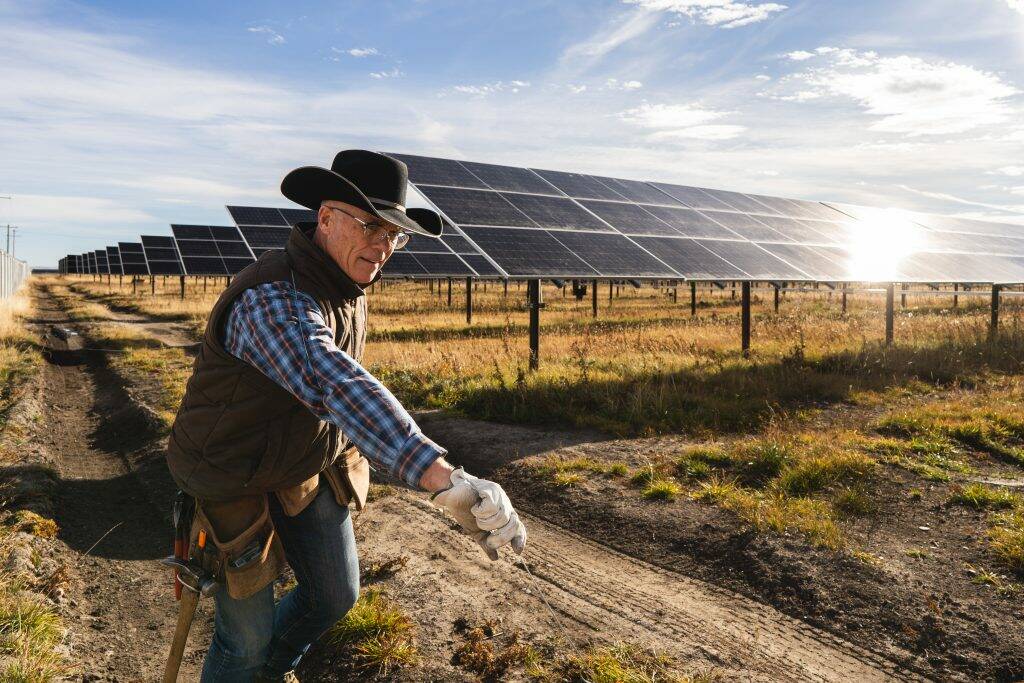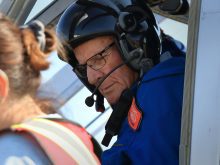It’s not easy coming up with an accurate job description for a person like Guy Innes.
On an average work day, the Regina resident could find himself preparing quarterly reports, identifying private sector companies that are interested in exporting new technologies, monitoring the success of rural development projects overseas, working with agricultural extension workers half way around the world or discussing obstacles to capital investment in the former Soviet Union.
“There are so many different duties involved,” Innes said.
“There’s lots of variety and you have to be able to deal with multiple tasks. There are also a lot of challenges but that’s one of the things about development work is that we’re pioneers. We’re trying to make a difference in an area that can benefit from our expertise and we’re trying to leave a legacy that will have a lasting impact on a country and its people.”
Read Also

Support needed at all levels for high-value solar projects
Farmers, rural municipalities and governments should welcome any opportunity to get involved in large-scale solar power installations, say agrivoltaics proponents.
Innes has two formal job titles. He simultaneously acts as director of international projects for the Saskatchewan Trade Export Partnership and as program director for the Canada-Ukraine FARM program.
The FARM program, which stands for Facility for Agricultural Reform and Modernization, is aimed at spurring agricultural development and rural reform in Ukraine.
The former Soviet republic is in the middle of an ambitious land reform program aimed at replacing outdated collective farms with a new system of private land ownership and modern agricultural production.
The FARM program, managed by STEP, receives most of its funding from the Canadian International Development Agency with in-kind support from the provincial governments of Alberta, Manitoba and Saskatchewan and major partners in Ukraine.
Describing the inner workings of a complex international program such as FARM can be a difficult exercise, but Innes, who has been heading the program since its inception in March 2003, summarizes it as a development initiative aimed at helping Ukraine modernize its rural areas.
When he was asked to head the program two years ago, Innes was well on his way to establishing a career in international development.
After finishing high school in Calgary, he completed a biology degree at Queen’s University in Kingston, Ont., and spent the next two years travelling through Europe, the Middle East, Africa, Asia, Australia and New Zealand.
“My grandmother, when she died, left each of us (grandchildren) some money but we had to spend it on travel,” Innes said. “We weren’t allowed to spend it on anything else.”
After completing his global tour, Innes returned to Canada with an appetite for overseas adventure and a heightened interest in foreign development issues and the importance of altruism.
He enrolled in the Asia Pacific Management Program in Vancouver and went to the Philippines as an intern trade consultant with the Canadian embassy. While he was there, he was contacted by CIDA and asked to serve as a private sector consultant to a couple of small business development projects.
Innes jumped at the opportunity and later became involved in another CIDA project before returning to Canada to reconnect with friends and family.
Within a year of his return, he had accepted a job with STEP and was directing the FARM program.
The FARM program has a budget of $9 million over five years and employs 30 people including 20 front line agricultural extension workers in Ukraine.
To facilitate the flow of information into the Ukrainian countryside, the FARM program is divided into two components.
One promotes the establishment of extension services in the four priority areas. In-kind resources and expertise are provided by the provincial agriculture departments from Alberta, Saskatchewan and Manitoba. Office space, operations and salaries for the 20 Ukrainian extension experts are funded under this component.
The second component is a grant mechanism that offers financial support to Canadian universities, education institutions, agricultural organizations and private businesses interested in sharing expertise or technology with Ukrainian farmers or extension workers.
All organizations involved in the grant mechanism must work with a Ukrainian counterpart and must encourage development through commercial or noncomercial links.
A total grant fund of $1.5 million is available to interested Canadian organizations and businesses.
So far, 13 projects have been approved for FARM grants.
According to Innes, Canadian groups that participate in the program often have different motives for getting involved.
“Many of our partners aren’t focused on business,” Innes said.
“A lot of them are focused on extension work and social development and building institutional capacity. Others are private sector companies who believe there is something in it for them. Some companies might see it as an altruistic thing … others might see it as a business opportunity.
“From our prospective we have to look at these projects, make sure they fit our mandate and ensure that they have the potential to provide concrete, sustainable results that deliver benefits to Ukraine.
“If there are residual benefits to our private sector participants, that’s great but first and foremost, this is a project about development.”
Recently approved projects include a proposal from the Prairie Farm Rehabilitation Administration aimed at reclaiming irrigation land and canals that were used to irrigate collective farms. Another is a project by Koenders Manufacturing in Englefeld, Sask., designed to expand the Ukrainian market for leaf cutter bees and equipment used in the large-scale production of alfalfa seed.
Innes admitted there are many challenges involved in developing Ukraine’s rural areas and expanding its agricultural capacity.
The transition from collective to private land ownership is a work in progress and the rural infrastructure in some areas needs significant investment. Homes in some rural areas are still without telephones and electricity and the roads are in terrible shape, Innes said.
Urbanization is also a concern.
A recent survey of newly registered landowners in Ukraine suggested that 20 to 30 percent of small agricultural landowners intended to farm their land themselves.
The rest would prefer to sell it on the open market or lease it to large, modern farmers who often manage up to 50,000 acres and have access to foreign capital, expensive machinery and new technology.
“Access to technologies and financing opportunities are a challenge, just as they are here to many small farmers,” Innes said.
“And obviously, there’s a real attraction to life in Ukraine’s urban centres as well. For example, when you compare some rural areas to Kiev, it’s like you’re in an entirely different world. It’s more westernized, there are more stores, more variety and more opportunities.”
Innes said the recent change in Ukraine’s political leadership is a promising development that should facilitate modernization and bring the country more in step with the European Union and other western powers.
At the same time, Ukrainian leaders recently postponed a regulation that would have allowed small landowners to sell newly acquired farmland in an open market system as of January 2005.
The postponement, which was met with harsh criticism from western leaders, means private land sales will not be allowed until 2007.
“I guess they really felt that the system of land ownership and land titling wasn’t strong enough to withstand the changes that would have probably taken place under an open market,” Innes said.
“Land ownership is such a sensitive issue, whether you’re talking about Ukraine or Saskatchewan.
“I guess my feeling is that Ukraine has to proceed with its reforms at its own pace and in its own time. In the end, Ukraine has to be ready to deal with the repercussions that emerge when they do decide to open the land market, domestically and to foreign interests.”















